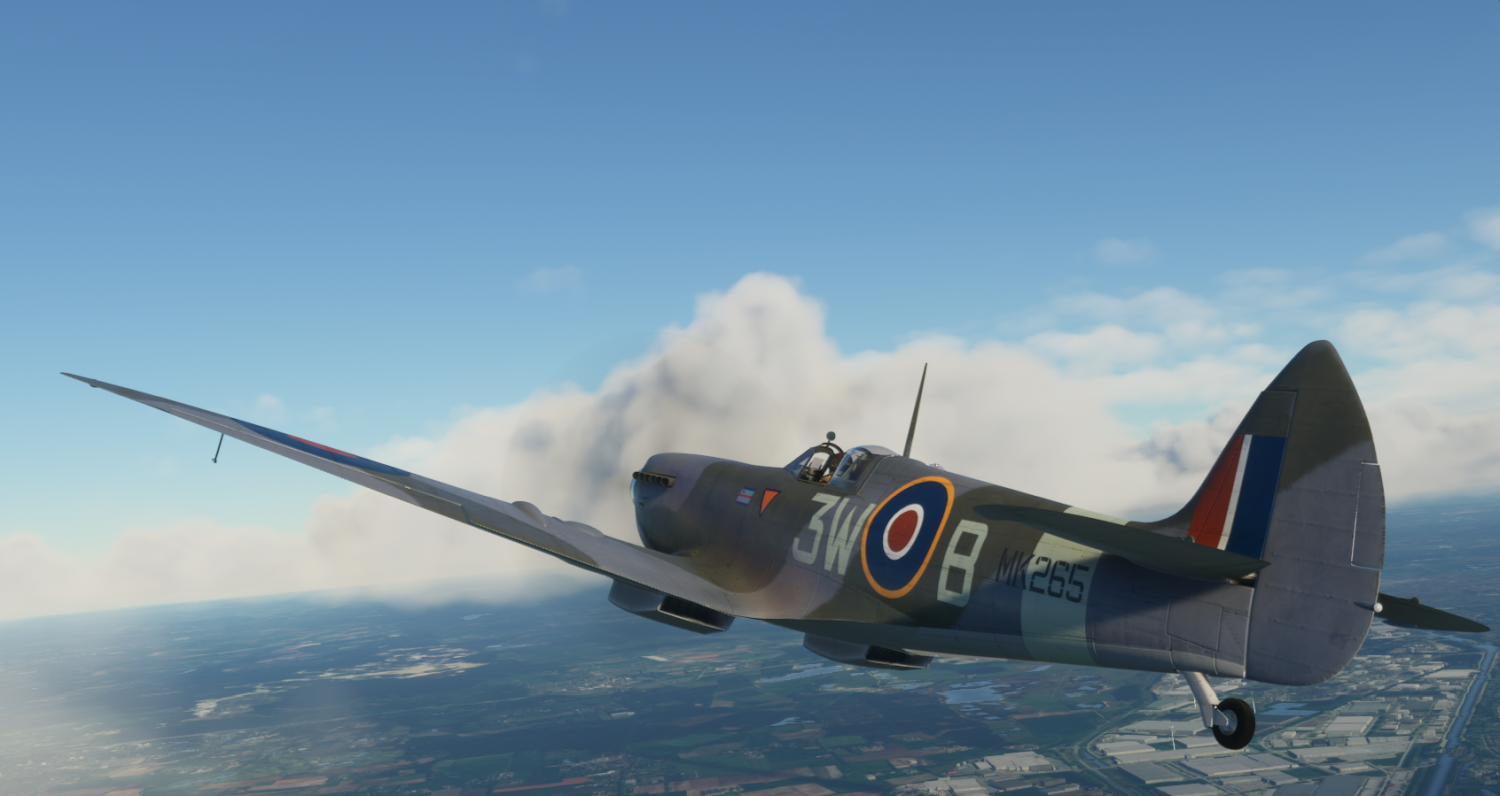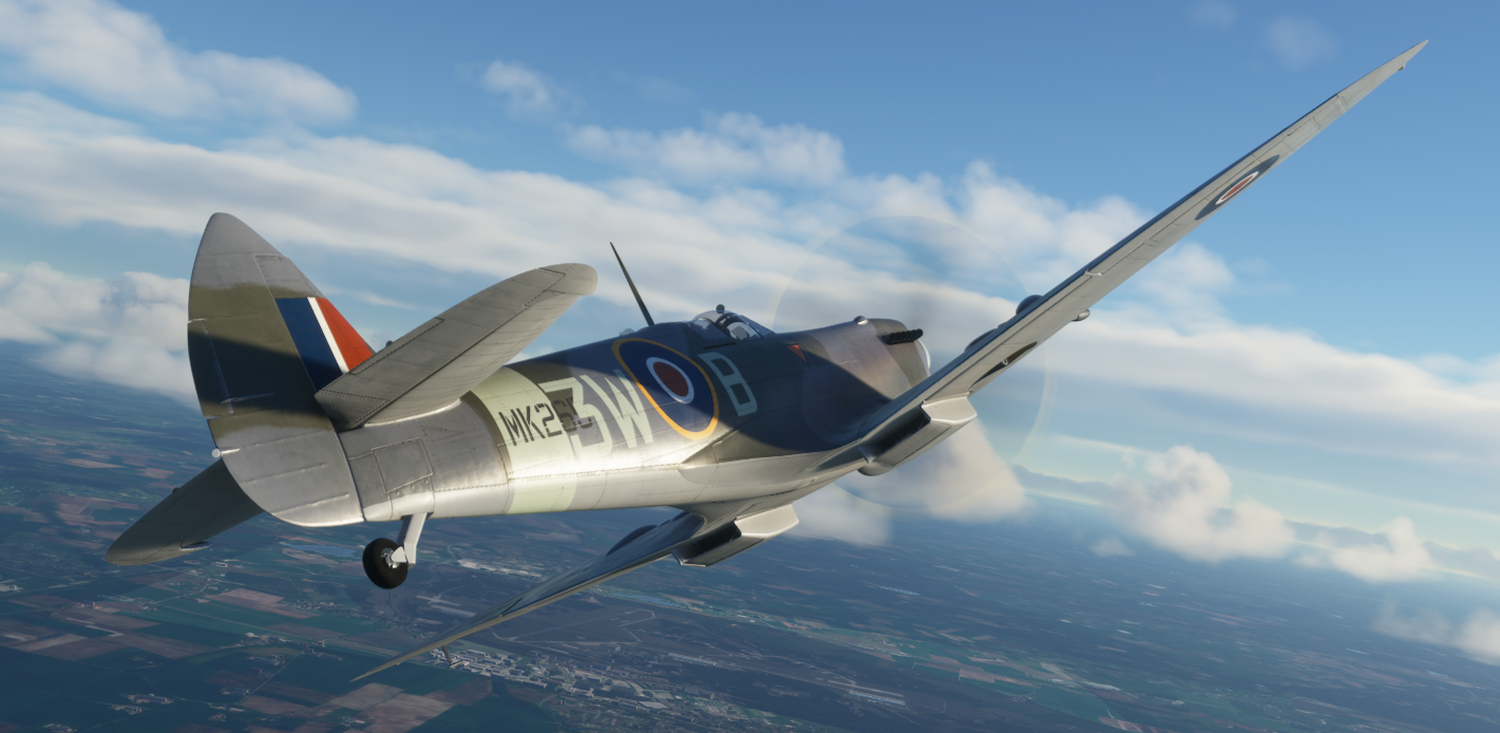-
There seems to be an uptick in Political comments in recent months. Those of us who are long time members of the site know that Political and Religious content has been banned for years. Nothing has changed. Please leave all political and religious comments out of the forums.
If you recently joined the forums you were not presented with this restriction in the terms of service. This was due to a conversion error when we went from vBulletin to Xenforo. We have updated our terms of service to reflect these corrections.
Please note any post refering to a politician will be considered political even if it is intended to be humor. Our experience is these topics have a way of dividing the forums and causing deep resentment among members. It is a poison to the community. We appreciate compliance with the rules.
The Staff of SOH
You should upgrade or use an alternative browser.
Released! Spitfire Mk IXc for Microsoft Flight Simulator
- Thread starter YoYo
- Start date
jankees
SOH-CM-2025
Is that a Belgian Lion insignia that I see?Lord knows that Lion heraldry was broadly used.
EDIT: it's a free French aircraft, maybe the pilot or squadron were from the French part of flanders.
Priller
The pilot was Pierre Clostermann, who was born in Brazil, with parents from Lorraine and Alsace. And he flew in this aircraft with no.602 squadron, so maybe it's another lion?
The pilot was Pierre Clostermann, who was born in Brazil, with parents from Lorraine and Alsace. And he flew in this aircraft with no.602 squadron, so maybe it's another lion?
You got a point there. After the crusades, a lot of European regions and cities started to use the Lion in their heraldry. I'll have to look into this!
Priller
heywooood
Mayor Emeritus of Taco City
here is the updated Spitfire on TO and Landing - and yes I forgot to switch the fuel petcock to 'on' before attempting to start the engine...
https://youtu.be/EW2rQo541OY
https://youtu.be/HRZ7-XjKWKU
DennyA
SOH-CM-2023
Negative G should NOT starve this engine of fuel or cause a cutout - the Merlin 66 had a pressurized carburetor so that problem in earlier Marks of the Spitfire was remedied by Mark IX
Ah, the joy of feedback from armchair critics vs actual historical research. "But I read somewhere Spitfires couldn't sustain upside-down flight!" I hope someone has sent corrective feedback to FlyingIron.
heywooood
Mayor Emeritus of Taco City
Jankees, excited to see Clostermann's paint! Read his book last year and it was an exciting recollection. Also, I'm doubly-impressed you're able to create these amazing and accurate paintjobs while having to factor in colorblindness!
Ah, the joy of feedback from armchair critics vs actual historical research. "But I read somewhere Spitfires couldn't sustain upside-down flight!" I hope someone has sent corrective feedback to FlyingIron.
so true - But I learned something new today about how the R.A.E. engineers took on this problem...ever heard of 'Miss Shilling's orifice" ? because it was news to me
Bomber_12th
SOH-CM-2025
DennyA
SOH-CM-2023
so true - But I learned something new today about how the R.A.E. engineers took on this problem...ever heard of 'Miss Shilling's orifice" ? because it was news to me
Me too! I read about that Miss Shilling's temporary fix, and then the full 1943 fix. Never had read that much about the Merlin itself until this came up. Looks like this reduced the problem even on the early Spit and Hurricane until the real fix could be implemented.
Shilling was a super-accomplished person, particularly given the barriers women faced during the time. Really interesting to read up on her! https://en.wikipedia.org/wiki/Beatrice_Shilling
Bradburger
Charter Member
Negative G should NOT starve this engine of fuel or cause a cutout - the Merlin 66 had a pressurized carburetor so that problem in earlier Marks of the Spitfire was remedied by Mark IX
Interesting that they should implement this 'fix'.
As you say, the Merlin 66 & 70 (LF/HF.IX) used a Bendix injection carburettor, so shouldn't have this issue.
(The F.IX with the Merlin 61/63/63A had the SU negative G carburettor, based on 'Miss Shilling's orifice' which was later to be known as the RAE Restrictor).
I would love to see them give a few more options for the 3D model so you could have a wartime and post war/restored versions. This would include the ability to choose the correct wartime 'flared' or 'fishtail exhausts (the rounded ones currently modelled were a post war modification and are used on some of todays fliers), an 'e' armament wing, early rudder, no upper undercarriage blisters (again, a post war mod), maybe an option to have the earlier type mirror, and also an option for the correct wartime tapered cannon fairings instead of the later 'e' wing 'blown' ones as fitted to some of todays restorations and as currently modelled.
Just some thoughts!
Cheers
Paul
shotgunshack
SOH-CM-2023
My first repaint inbound:
RAF 322 Sqn Dutch Squadron, W3-B MK265, flown by squadron leader C.L.M. van Eendenburg.


Based on this very sharp original photo:

Roundel/tailflash size, colour and location adjusted.
Marcel
Is it possible to paint over the default chromate yellow undercart legs and wheel wells?
mgr
SOH-CM-2023
Is it possible to paint over the default chromate yellow undercart legs and wheel wells?
Yes, only it has to be done per livery.
Don't know is a general consensus over how the wheel/gear wells were painted (or not) around 1944 on the RAF's Mk IX?
Seems always discussions about the correct colors, like the "red" and "blue" or the variant of the "sky" colours.
@Bomber_12th : any thoughts on this?
Marcel
cavaricooper
SOH-CM-2023
Ta- C
Bomber_12th
SOH-CM-2025
It is great to see MK265 being given attention, Marcel!
Bomber_12th
SOH-CM-2025

Bomber_12th
SOH-CM-2025
As a HUGE fan of the RealAir Spitfire, I have been looking at this a lot... how does she fly? Does she capture the Spitfire magic, or fall short? She looks divine!
I think the flying qualities of the Spitfire Mk.IX have been captured very well by FlyingIron. It is a more true-to-life flight model than the RealAir Spitfire was in FS2004/FSX/P3D.
As in the case of the real thing, it doesn't take full power to get airborne. In all of the pilot reports I've read over the years, 8+ boost is most often cited for takeoff power, which despite being less than half the available power (+18 boost WEP), it is more than ample. Some modern-day Spitfire Mk.IX operators only use +6 boost for takeoff, and that is sufficient with the FlyingIron Spitfire Mk.IX as well. With fuel only in the bottom tank and +6 boost, 3000 RPM, from brake release it only takes just over 15 seconds to be passing through 90 mph and flying. The correct takeoff trim settings in the Spitfire Mk.IX are +1 elevator (nose up) and 75%-100% right rudder trim, and this is true of the FlyingIron Spitfire Mk.IX as well. On takeoff, especially now following the latest update, it requires some right rudder and right aileron to overcome the torque and p-factor (again, just like the real thing). The rudder is very effective, however, so it is easy to keep it straight with only a little foot pressure.
For climb I typically use +5 boost and 2600 RPM, and it will maintain a 2,000 fpm climb rate at those settings. For cruise I usually use +2 boost and 2300 or 2400 RPM, which gets me about 215 mph indicated. All of those settings are in the ballpark of what is used by Spitfire operators today. In the air, the aircraft is a lot of fun to toss about in the virtual sky. You can really pull and wrap it around and, just like the real thing, it doesn't require a lot of airspeed to do so. The elevators and rudder are very responsive and have a lot of authority. Aileron authority is good, but the roll rate, just like most real Spitfires, is not very fast when compared to some of the other fighters of WWII (such as the P-40). The 'feel' seems all very accurate to what I've read. The clipped-wing version rolls a bit faster than the full-span wings, while it feels like the full-span wings allow you to climb better than the clipped-wing version. Stall speeds appear to be the same no matter which version you're flying. The "virtual stick forces" are very light and responsive, which is how the real-world Spitfire stick forces are described.
When setting up to land, the Spitfire doesn't slow down too easily, but this is handled just as real-world operators must, with an overhead break - flying at or below pattern altitude, down the length of the runway, and pulling up into a crosswind mid-field with a 3+ G turn, the speed bleeds right off to the 160 mph gear and flap speed as you level out on the downwind leg. Gear is selected down when on downwind and flaps are selected down just before the base turn or midway through the base turn depending on preference.
The stall speeds seem to be at least a few mph too slow when compared to the book stall speeds of the real Mk.IX. I tend to shoot for about 95 mph before the threshold and as I cross the threshold I pull the power off and keep the stick back until it settles onto the runway in a three-point attitude (of course just playing it by feel, not paying attention to the airspeed at that point). The real Spitfire Mk.IX has no inherent tendency to swerve or groundloop on landing, which is how the FlyingIron Spitfire behaves as well. However, because of the narrow track landing gear, it does want to dance a bit sometimes after touching down, and you have to be very mindful with the ailerons in addition to rudder and elevator on landing rollout. As they say, you don't stop flying it until you're parked and the engine is off.
Also, it will easily nose over if you are hard on the brakes or add too much power while holding the brakes - again, just like the real thing.

